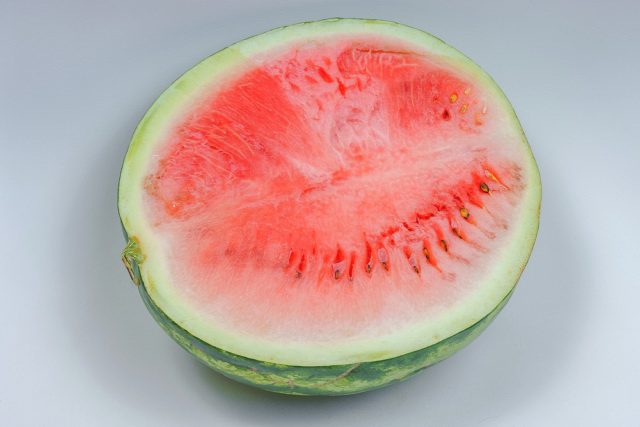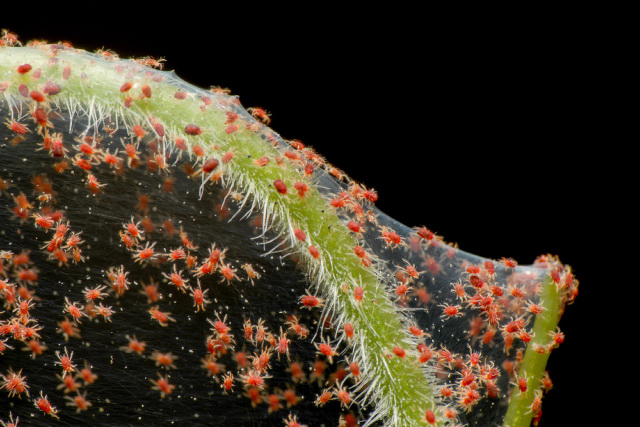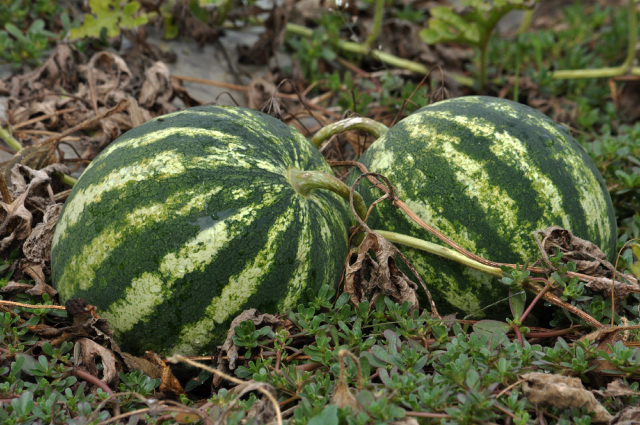There’s nothing better in the hot summer months than a juicy slice of watermelon, especially if it’s grown in your own garden. If your watermelons aren’t ripening properly though, you’ll want to find out why. No one wants to be deprived of that sweet juiciness!

If your watermelons are slow to ripen or are failing to fully ripen at all, it could be due to the wrong temperature levels, insufficient sunlight, soil nutrient imbalance, insect infestation, incorrect watering, or overcrowding.
Today, we’ll be looking more closely at these potential causes of watermelons not ripening properly. Crucially, we’ll also be looking at solutions for you to try to rectify the situation, so that you can look forward to enjoying plump, ripe, sweet watermelon straight from the garden.
Table of Contents
- Incorrect Temperatures Can Prevent Watermelons from Ripening
- Watermelons Need Plenty of Sun to Produce Ripe Fruit
- Imbalance of Soil Nutrients Can Prevent Watermelons from Ripening
- Insect Damage Can Prevent Watermelons from Ripening
- Lack of Water Can Prevent Watermelons from Ripening
- Overcrowding Can Prevent Watermelons from Ripening
- Give Your Watermelons Enough Time to Ripen Properly
Incorrect Temperatures Can Prevent Watermelons from Ripening
Watermelons need at least 100 frost-free days in order to develop fully. In temperate climates, particularly cooler ones, making sure you put them in the ground well after the risk of frost has passed is crucial.
It’s a good idea to start off growing your watermelons indoors, acclimatizing them to the outdoor life in late May or early June, well beyond the frost-risk mark.
At night, watermelons prefer between 60 and 70 °F (16-21 °C). Their preferred daytime temperature sits between 80 and 95 °F (27-35 °C). They can produce fruit below this preferred temperature range, but the juiciest, ripest melons are likely to result from warmer temperatures.
In cooler regions, it may be necessary to grow watermelons in greenhouses, polytunnels, or under a cloche for best results. This can ensure that temperatures remain on the higher end and will encourage fully ripened, juicy fruit.
Watermelons Need Plenty of Sun to Produce Ripe Fruit
Watermelons like it warm and sunny. In order for plenty of sugar to be created for the fruits via photosynthesis, the plant needs plenty of sun. By plenty, I mean at least 8 full hours a day.
It’s preferable to plant your watermelon crop in full sun, particularly in cooler climates where summers are not likely to reach high temperatures. If temperatures look set to climb beyond 95 °F (35 °C), you may want to apply temporary shading via netting. Whitewash on glass can also help to shade exposed plants if they are in a greenhouse.
Imbalance of Soil Nutrients Can Prevent Watermelons from Ripening
If your watermelon plants are lacking in potassium or phosphorus, this can inhibit their ability to ripen fruit. Both nutrients are important in terms of fruit production and health.
Some gardeners recommend adding organic potash fertilizer like this one to your watermelon plant beds once they are established early in the growing season. This can help encourage the plant to develop and ripen fruit.
If your plant is supplied with an excess of nitrogen, this could cause your watermelons to prioritize leafy green growth over fruit production. Whilst healthy, green foliage is important for photosynthesis, you also want your melon plants to focus their energies on ripening fruit rather than expanding green growth prior to harvest.
Insect Damage Can Prevent Watermelons from Ripening
Insect infestation is a relatively common cause of foliage damage, with two of the most common melon pests being red spider mites and aphids.
Watermelon plants need to be able to produce sugars if they are to allow their fruits to ripen fully. Glucose being transferred to the fruit is an important part of the ripening process.
Sugars in plants are produced via photosynthesis, which in turn requires healthy, green foliage and plenty of sun.
If your watermelon plant lacks healthy foliage, this can in turn prevent your watermelons from ripening fully. It, therefore, stands to reason that, if your watermelon leaves are eaten or damaged by hungry critters, this can have a knock-on effect on your fruit.
Glasshouse Red Spider Mites

You may notice your watermelon plant leaves becoming patchy, pale, and covered in a spider-like webbing. These tiny mites suck nutrients from the plant as well as damage the leaves over time.
They thrive in dry, hot conditions and don’t do so well in humidity. In arid periods, try to mist your watermelon plants regularly to discourage them from setting up shop.
Inspect the leaves of your plant regularly and remove any small mite-like insects or eggs by hand as soon as they appear.
Aphids
Aphids will happily munch through a variety of edible crops, including watermelons. These tiny critters can come in a variety of colors depending on the species. Too many of them on a plant and the leaves can become increasingly damaged.
Aphids also produce a sweet, sticky substance often referred to as ‘honeydew’. This secretion can in turn lead to fungal disease and the development of black, sooty mold. The more damaged your leaves are by mold or insect feasting, the less available surface area for photosynthesis and sugar production.
As with spider mites, a key part of preventing aphid infestation is by inspecting your plant regularly. Remove any aphids by hand (with a blast of water) and try to encourage a healthy, biodiverse ecosystem. Ladybirds, lacewings, and certain species of parasitic wasp are all important predators in terms of keeping aphid populations in check.
Both horticultural neem oil and insecticidal soap can also help prevent and remove a pest infestation from aphids and spider mites.
Lack of Water Can Prevent Watermelons from Ripening
Watermelons are a relatively thirsty plant. Dry spells can severely impact its ability to invest sweetness and juice in ripening fruit.
You want to try to keep the watermelon bed moist but not saturated throughout the growing season. This could mean watering lightly every day during hot or dry periods.
To avoid saturated soil, which can, in turn, encourage root rot and other forms of fungal growth, plant your watermelons in well-draining soil. I also like to plant watermelons on small mounds to help with drainage and increase sun exposure.
Overcrowding Can Prevent Watermelons from Ripening
If you have too many watermelons growing at once on a single plant, they may struggle to ripen equally and fully. For this reason, it’s often recommended that you focus your plant’s energy on three or four of its healthiest-looking fruits. Prune away smaller fruit in the earlier months to allow any frontrunners the plant’s full attention.

Give Your Watermelons Enough Time to Ripen Properly
Last but not least, watermelons need time in order to ripen fully! Generally, watermelons need 100-120 days to reach maturity. If you find that you have picked watermelons from the plant only to discover they haven’t quite reached their full potential, it could be that you’ve simply harvested too soon.
Watermelons, unlike some other fruits, will not continue to ripen once they’ve been removed from the vine. As such, it’s important that you leave them attached for the full length of time they need to soak up water, and sweetness, and to fully ripen.
How do you know if the melon is ripe and ready to harvest? You may see advice about thumping a watermelon and checking the sound it makes. In my experience, this isn’t the most foolproof way of telling unless you know exactly what you’re listening out for! There are other visual clues, easier to discern, that you can keep an eye on instead.
First of all, if you check the stem of the watermelon near where the fruit attaches to the main vine, you should see a tendril or two. If these tendrils are brown or dried out, this is a good indication that the watermelon nearest to them is ripe and ready to harvest. Green, springy-looking tendrils mean the watermelon probably has a little way to go yet.

Second, check out the spot on the melon which rests on the ground. This is sometimes called the ‘field spot’ or ‘belly’ of the watermelon. If the watermelon is fully ripened, this should be a creamy or yellow color, rather than a white or pale green. Pale green or white indicates that the watermelon should probably be left to ripen a little longer.
Related Reading:
- How to Grow Watermelons: Planting, Caring, and Harvesting Watermelons
- Watermelon Flowers But No Fruit? Causes and Solutions
- Why Is My Watermelon Bitter? Answered!
- Watermelon Plant Dying? Causes and Solutions
- Easy Watermelon Salad Recipe with Feta, Mint, Balsamic
- Kiwano Melon: Grow African Horned Melon and Eat the Fruit
- A Guide to Harvesting Ripe Cantaloupes
